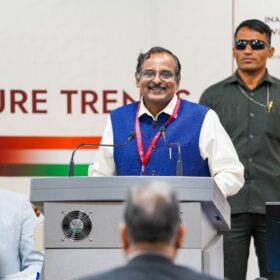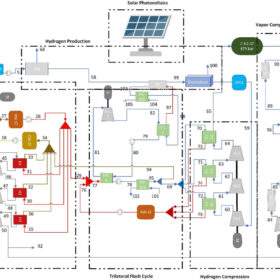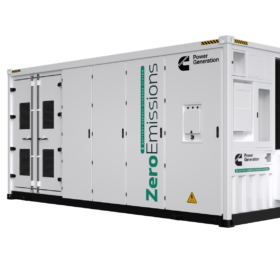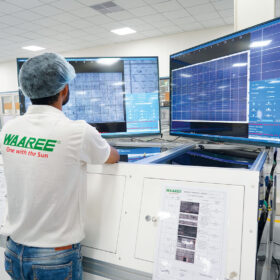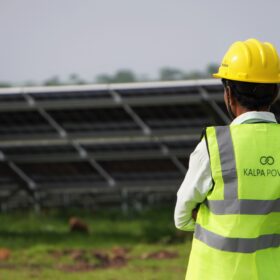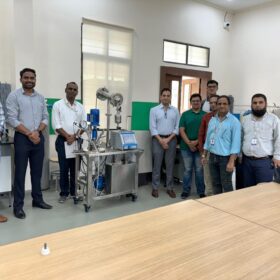SolarEdge unveils all-in-one residential inverter and clickable modular battery system
The stackable battery ranges 4.9 kWh to 19.6 kWh per unit while the inverter is available in ranges from 3.8 kW to 13 kW. The company also introduced a meter socket adapter to avoid triggering costly main panel upgrades.
BYD unveils 14.5 MWh storage system, world’s largest yet
China’s EV giant has unveiled the 14.5 MWh DC “Haohan” single-unit DC block with record-breaking capacity to challenge next-generation energy storage market.
The Hydrogen Stream: “Hydrogen to play transformative role in India’s space missions, transportation, and clean energy future,” says ISRO Chairman
Hydrogen is set to play a transformative role in India’s space missions, transportation, and clean energy future, said Dr. V. Narayanan, Chairman, Indian Space Research Organisation (ISRO), at a National Workshop on “Hydrogen Fuel Technologies and Future Trends” held at Alliance University, Bengaluru, in association with Indian Institute of Science.
The Hydrogen Stream: Qatari team outlines solar hybrid station design
Qatari researchers tell pv magazine that they have designed the world’s first hybrid station concept combining PV, liquid air, hydrogen storage, and batteries for EV charging and hydrogen refueling.
Cummins launches all-in-one containerized BESS solutions in India
Cummins has introduced fully integrated, plug-and-play battery energy storage system (BESS) solutions in India, with capacities ranging from 211 kWh to 2,280 kWh. These AC-output BESS solutions are designed for commercial, industrial, and mission-critical applications and are available in 10-foot and 20-foot container configurations.
Honeywell introduces all-in-one, modular BESS for C&I segment
Honeywell Ionic battery energy storage system (BESS) combines flexible battery storage with Honeywell’s advanced control and energy management system, helping to optimize energy costs, absorb fluctuations in energy demand to ensure grid stability, and provide back-up power when needed.
Charging up fleets to overcome India’s infrastructure hurdles for EV adoption
Scaling electrified fleets relies not just on vehicles, but on the infrastructure that powers them: without a robust, accessible, and optimized charging ecosystem, fleet EV adoption may stall, undermining both environmental goals and operational efficiency.
ACME Group, IHI Corp. fast-track India’s largest green ammonia project in Odisha
ACME Group and Japan’s IHI Corp. are advancing EPC contracting, renewable energy integration, and evacuation infrastructure arrangements for their joint green ammonia plant in Gopalpur, Odisha. Slated for commissioning by 2029–30, the facility will primarily export green ammonia to Japan,
Bluetti debuts world’s first sodium-ion portable power station
The Pioneer Na will be available globally from mid-October, 2025.
India Energy Storage Alliance (IESA) welcomes the new tax regime under GST 2.0
The India Energy Storage Alliance (IESA) has welcomed the streamlining of the GST rate for all advanced batteries under heading 8507 to a uniform 18%, replacing the earlier regime where lithium-ion batteries were taxed at 18%, while other chemistries attracted a 28% GST.


